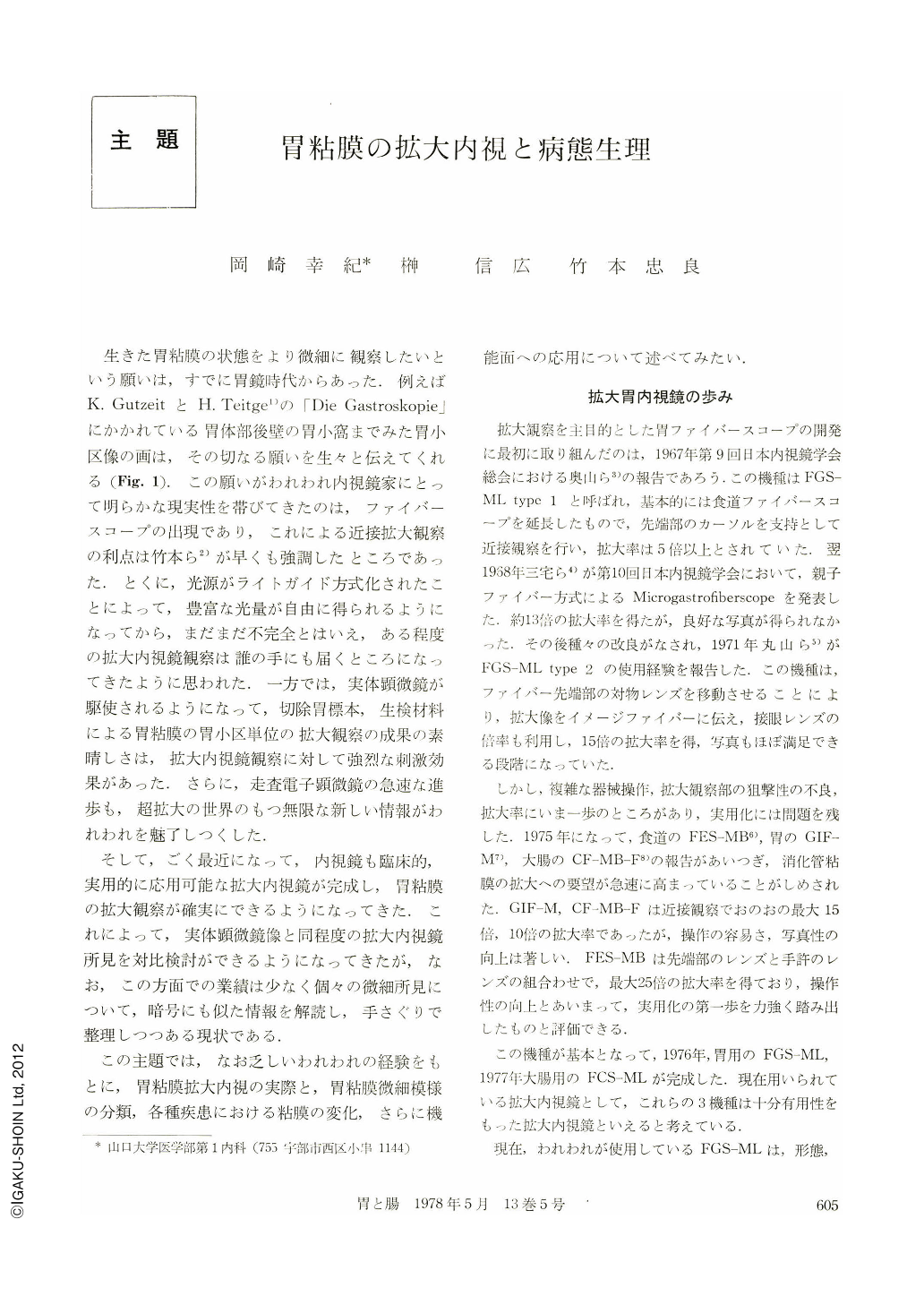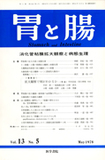Japanese
English
- 有料閲覧
- Abstract 文献概要
- 1ページ目 Look Inside
生きた胃粘膜の状態をより微細に観察したいという願いは,すでに胃鏡時代からあった.例えばK. GutzeitとH. Teitge1)の「Die Gastroskopie」にかかれている胃体部後壁の胃小窩までみた胃小区像の画は,その切なる願いを生々と伝えてくれる(Fig.1).この願いがわれわれ内視鏡家にとって明らかな現実性を帯びてきたのは,ファイバースコープの出現であり,これによる近接拡大観察の利点は竹本ら2)が早くも強調したところであった.とくに,光源がライトガイド方式化されたことによって,豊富な光量が自由に得られるようになってから,まだまだ不完全とはいえ,ある程度の拡大内視鏡観察は誰の手にも届くところになってきたように思われた.一方では,実体顕微鏡が駆使されるようになって,切除胃標本,生検材料による胃粘膜の胃小区単位の拡大観察の成果の素晴しさは,拡大内視鏡観察に対して強烈な刺激効果があった.さらに,走査電子顕微鏡の急速な進歩も,超拡大の世界のもつ無限な新しい情報がわれわれを魅了しつくした.
そして,ごく最近になって,内視鏡も臨床的,実用的に応用可能な拡大内視鏡が完成し,胃粘膜の拡大観察が確実にできるようになってきた.これによって,実体顕微鏡像と同程度の拡大内視鏡所見を対比検討ができるようになってきたが,なお,この方面での業績は少なく個々の微細所見について,暗号にも似た情報を解読し,手さぐりで整理しつつある現状である.
The present condition of the magnifying endoscopic observation of the gastric mucosa and its further development are discussed through datum obtained with the use of the magnifying endoscopy FGS -ML. Comparing the magnifying endoscopic view with that of the dissecting microscope view, we have classified the fine mucosal patterns into five basic patterns―FP, FIP, FSP, SP, MP. The standard magnifying ratio was set to 20 times. According to this classification, the explaining of the condition of the mucosal surface was simplified, and moreover, possibilities for diagnosing the disease from these fine mucosal patterns are becoming evident. FIP is uniquely observed in the intermediate region, which is known to include the atrophic border and the glandular border. In addition to the function of the atrophic border made possible by the congo red test, the atrophic border and the glandular border can be discussed from a morphological standpoint by the use of magnifying endoscopy.
Proplems concerning the function and the observational technique of the magnifying endoscopy still remain to be solved. The type presently used is the fore-viewing system and furthermore, in magnifying endoscopy, it is necessary to put the mucosa into close contact with the tip portion of the fiberscope. Therefore, extremely difficult problems on observations remain. Simplification of the scope illuminator, easy and accurate observation of the aimed area, new ideas on the biopsy device, primarily the minute biopsy forceps, and on marking devices are necessary. From a technical standpoint, it is important to prevent influences due to halation, purification of the mucosa, peristaltic movement, respiration, pulse, during observations.
Magnifying endoscopy has only taken its first step, and it will undoubtedly open up new paths to gastroenterological endoscopy. We hope for its rapid development in the future.

Copyright © 1978, Igaku-Shoin Ltd. All rights reserved.


